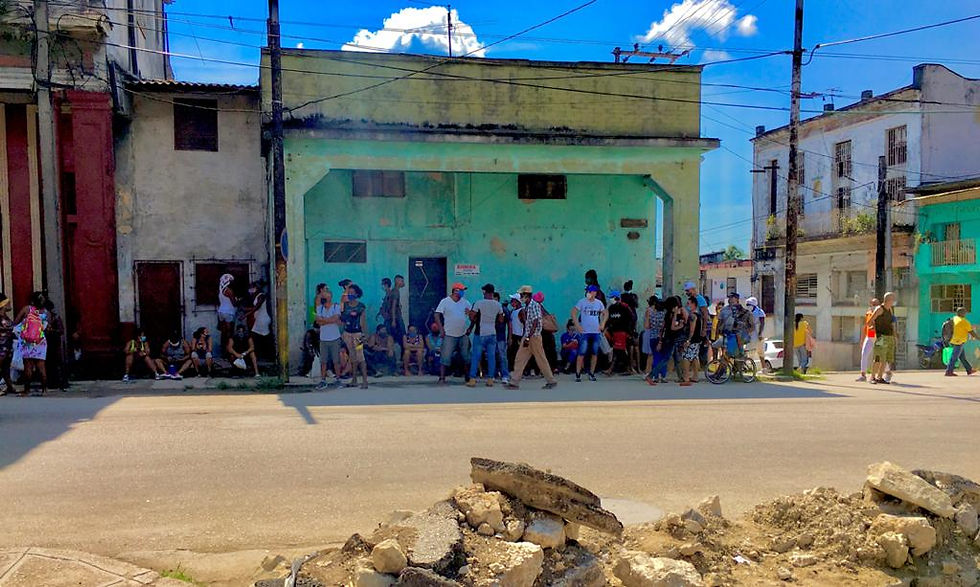CUBA TRIP & VISIT OLD HAVANA 2.0
- Cuba Travel
- Jan 7, 2020
- 3 min read
Updated: Feb 9, 2020

TRIP TO CUBA & OLD HAVANA GUIDE
OLD HAVANA WHEN IT WAS YOUNG
Having been founded in 1519, sacked and burned down by pirates necessitating the building of fortifications and wall around the city. Havana was growing exponentially by the early 1600s, do to frequent and steady visits by the Spanish treasure fleets on their return to Spain laden with new world riches. But things took a turn in 1649 when a Yellow fever outbreak killed over a quarter of the city’s residents and temporarily stalled the young capitals growth spurt. In the mid-1700s Havana was one of the most important cities in the Spanish empire with a population of over fifty-thousand people, making it the third largest city in the Americas, larger than Boston or New York. It was the main shipyard of the empire and its harbor housed the only dry dock in the Americas.
Havana is seized in 1762 by the British after a successful and quick invasion by ten-thousand troops. The residents of Havana apparently were quite pleased by this take-over, and trade, which was very restricted by the Spanish crown, grew during the almost year-long British take-over. The city is returned to Spain in 1763 in exchange for what would someday become the US state of Florida, southern Alabama, and a small area of Louisiana and Mississippi. In 1767 the protective wall around the city is completed, but by then the city had outgrown its wall, and construction was booming outside the wall. Trade conditions improved after the British leave the city with the Spanish monarchy allowing more trade with less royal intrusion and lower taxes. The building boom continues with sugar, timber and tobacco the main exports. By 1837 Havana has a railroad that connects the city to sugar cane fields south of the city. At the time Cuba was one of only five countries in the world with a railroad. In 1863 the city walls that had taken a century to build began to be taken down.
The second half of the nineteenth sees the island embroiled in a long struggle for independence, with two major wars, one from 1868 to 1878 and the second from 1895 to 1898.
TOP 10 THINGS TO DO IN OLD HAVANA
1. Numbero uno on my list is sitting at a bar or café and enjoying the vibe, people watching, and drinking a mojito or daiquiri.
2. Paseo del Prado is Old Havana’s main street, and is a great place to walk from the malecon to the end where it runs into the not very touristy neighborhood of Jesus Maria, which is worth visiting to see the contrast between the “touristy” Old Havana and the real deal.
3. Hotel Inglaterra, research this old hotel which has been a part of Cuba’s history for over one-hundred years, and then pay it a visit.
4. A visit to the newly renovated capitolio is a must, check it out, and remember it’s just a little bit taller than the US Capitol.
5. The national branch of the Museo de Bellas Artes where you will find works by Cuban artists seldom seen outside Cuba.
6. Across the street from number 5 is the former presidential palace of Cuba and now houses the Museum of the Revolution.
7. Visit the Hotel Saratoga, make your way to the rooftop bar and pool deck and have a refreshing cocktail or cold glass of water.
8. A visit to Old Havana without a stop at one of Hemingway’s haunts doesn’t seem right, and the Ambos Mundos Hotel is probably the only place that Papa would patronize today.
9. Havana has five main plazas, but the Plaza Vieja is by far the best, walk around and keep in mind some of the buildings are almost four-hundred years-old.
10. Walk around and see the city, talk to the locals, some crazy, some hustlers, and some very nice people.
By Frank Gonzale
trip








Comments